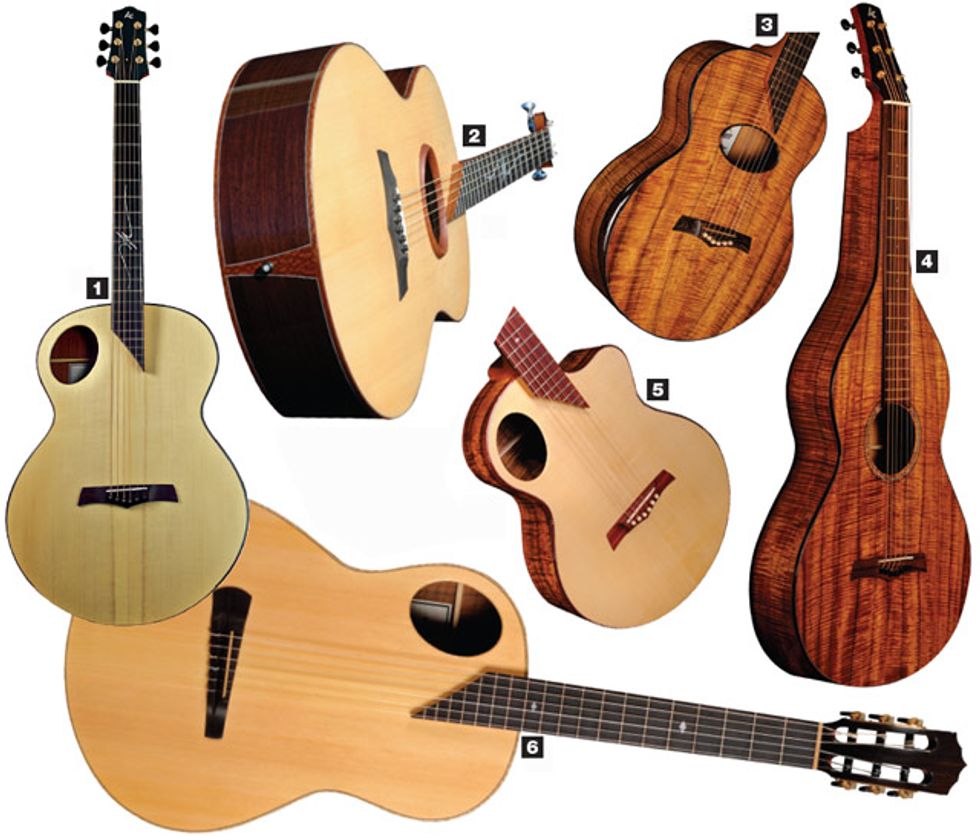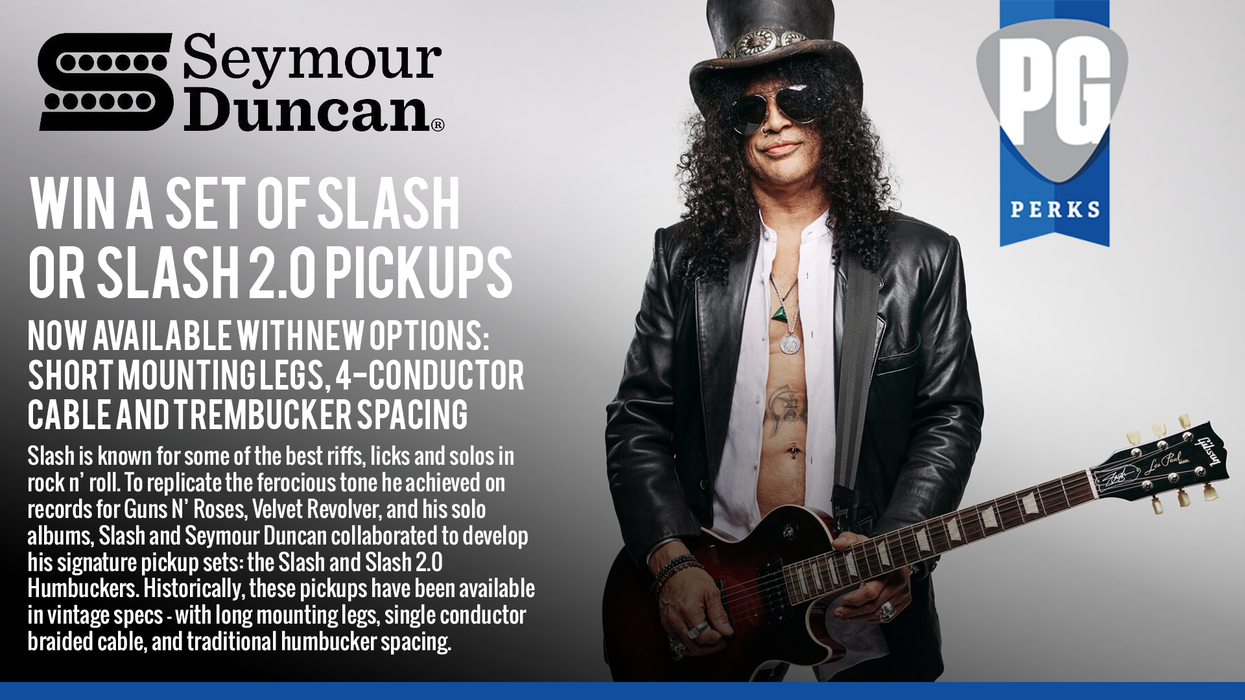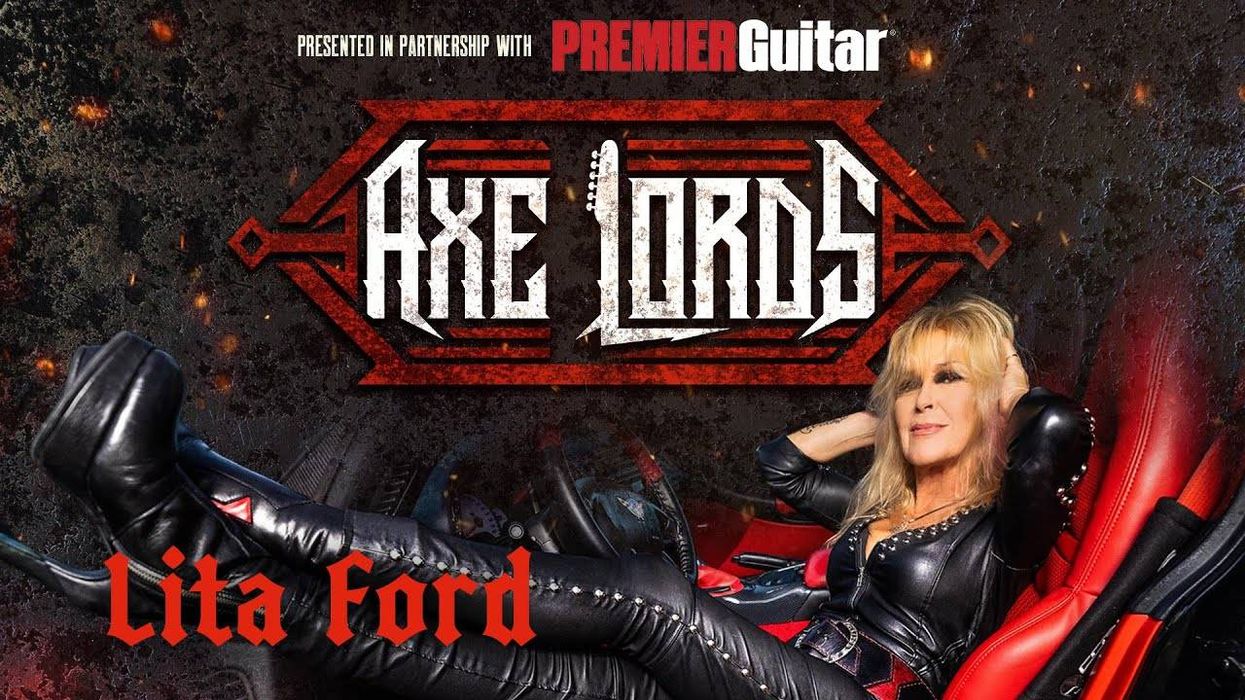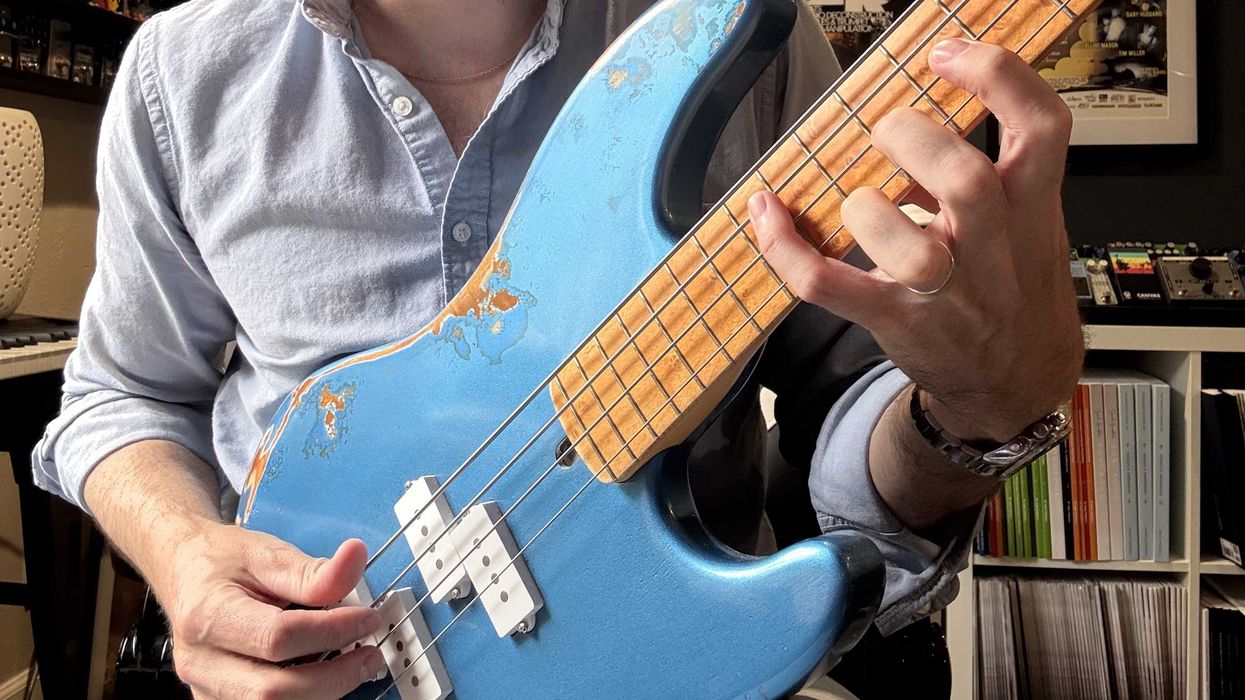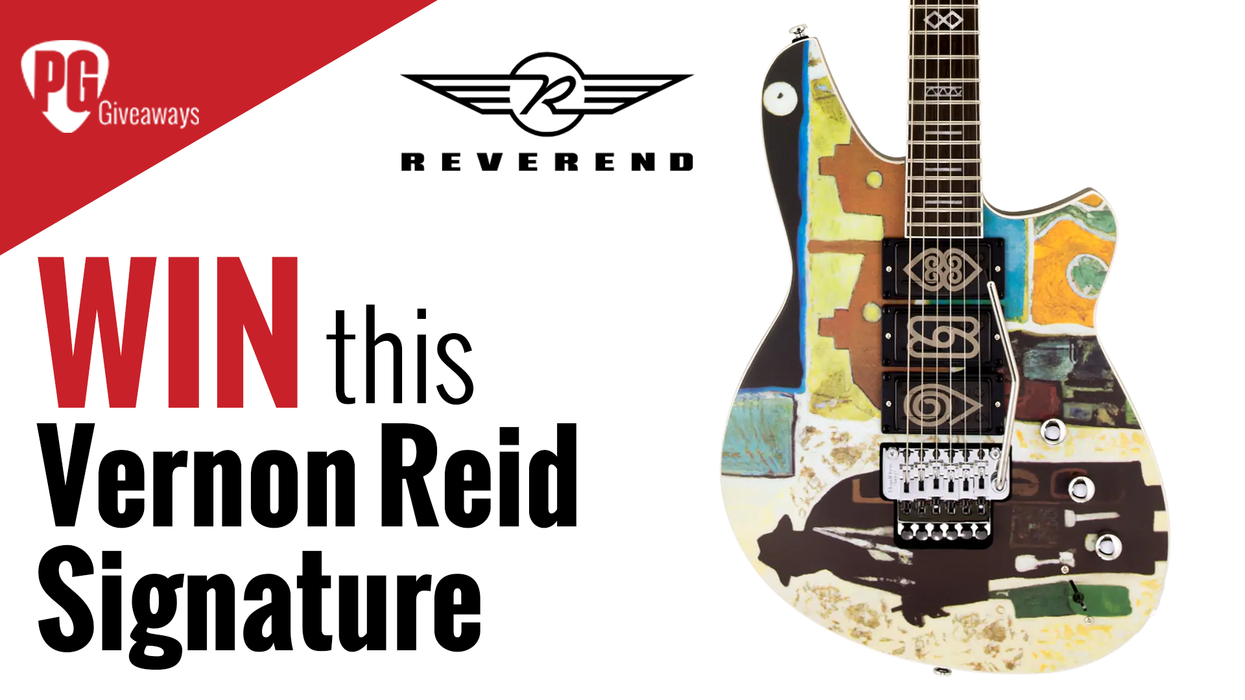Though Kipp Krusa went through a punk-rock phase early on, his love of acoustic artists like Doc Watson, Mississippi John Hurt, John Renbourn, and Jorma Kaukonen ultimately led him to form Krusa Guitars and build acoustic guitars exclusively. With more than 20 years of guitar- building experience now under his belt, Krusa has become a formidable presence in the world of custom acoustics. “Guitar guru” George Gruhn of Gruhn Guitars has said, “I have never been so intrigued with the sound of a new guitar design,” and respected artists like Russ Barenberg sing praise for Krusa’s instruments as well.
Given these accolades, it may come as a surprise that Krusa initially honed his woodworking skills at the Northwest School of Wooden Boat Building. It was there that he had his guitar-maker epiphany when he realized if he could bend boat planks, he could bend guitar sides as well. Soon after, he enrolled at the Timeless Instruments’ School of Luthiery. Krusa would later cut his teeth during a three-year stint at Froggy Bottom Guitars, where he learned how to build a traditional-sounding guitar—bracing more than 500 of them with a traditional, Martin-influenced pattern.
Although Krusa built hundreds of traditional guitars at Froggy Bottom, he realized that his personal tonal expectations required some experimentation. While a traditional X-braced guitar typically offers a balanced response that’s suitable for rhythm playing, one of its limitations is a lack of dynamic range in the treble register. Krusa sought to build a guitar that emphasized articulation, clarity, and note separation in the upper registers without compromising the instrument’s harmonic riches. This quest led to Krusa’s take on an offset-soundhole design—which allows more of the soundboard to function tonally—but finding a bracing aesthetic that worked with this soundhole approach took some time. After much experimentation, Krusa developed a modified fan brace that he uses on every instrument featuring an offset soundhole.
Another distinguishing characteristic of Krusa’s guitars is the use of an elevated fretboard. Utilized on every model except the Monarch, it changes the neck angle to provide a dramatically increased support structure underneath the fretboard and beyond the body joint. Krusa claims that using this method ensures a neck reset will never be necessary.
On a farm 20 miles west of Nashville, Krusa’s shop is a one-man operation where interested players are welcome to come by and try out one of his creations.
Pricing and Availability
Krusa Guitars are custom-built to order. Krusa will discuss the specifics of the build with the client by touching on body shape
and depth, scale length, nut width, string spacing at the saddle, inlay, neck profile, and materials. Krusa also factors in a client’s
playing style, physical stature, and musical approach to help him define the instrument that will work best for each client.
The base price is $6,000 for all carved-top models, $4,000 for flattop models, and $3,800 for the Monarch. Krusa offers an
extensive menu of custom options and upgrades like abalone side-purfling for $1,000 to a Venetian cutaway for $900. The wait
time for a guitar is usually over a year, but Krusa has one spot remaining for the coming year. krusaguitars.com
1. Sonora Photo by DHR Creations
The Sonora baritone brings Krusa’s sound to the sonic sphere just between guitar and bass. With 27.5" as the
standard scale length, players with more specific needs are able to request a scale length from 27" – 28.5"
that best fits their playing style. For fingerstyle players that lean toward chordal playing, Krusa recommends
the standard length for the best possible playability. But for jazz players with a single-note oriented playing
style, he suggests a longer scale of 28" or 28.5" as a better fit. The Sonora’s neck is reinforced with carbon
fiber to accommodate the longer scale length and extremes in tuning ranges that baritone guitars are often
subject to. “Baritone players seem to be intrigued with stretching tonal boundaries,” Krusa explains. “The
carbon-fiber reinforcement allows me to be confident that a baritone will do whatever is asked of it.”
2. Kyoto
The Kyoto is Krusa’s most
traditional full-sized guitar with
its conventional X-bracing and
soundhole placement. With a
15.875" body width, 4.125" body
depth, 20.25" body length, and
a 25.5" scale length, the Kyoto
is meant to feel equally at home
whether playing full open-chords,
flatpicked single-note melodies,
or contrapuntal fingerstyle arrangements
that utilize the full
span of the neck. The Kyoto
pictured here features a raised
rosette, German spruce top, and
wenge for the back and sides.
3. Trillium
With traditional soundhole placement and X-bracing, the Trillium bears a
striking resemblance to the Kyoto. However, closer inspection reveals that the
Trillium is slightly smaller, with a 15" body width, 4.125" body depth, 19.25"
body length, and 25.25" scale length. Sonically, the Trillium is a little punchier
than big brother Kyoto, but not quite as full-bodied, making it a fine choice
for blues, ragtime, and styles that rely on note articulation. The Trillium model
shown here features a koa top to match the back and sides, but spruce, cedar,
and sinker redwood are also available as soundboard options.
4. Monarch
The Monarch, inspired by the Weissenborn lap steel
guitars of the 1920s, offers lap players a warm and rich
alternative to the cutting sound of a Dobro-style guitar.
Utilizing Honduran mahogany for the back, sides, and top
on the base model, the Monarch pictured here has been
upgraded with koa. Krusa’s 18-fret Monarch is the only
model in his line that does not have an elevated fretboard.
5. Fat Cat
Russ Barenberg is a notable user of the Fat Cat, Krusa’s
most popular model. It features all of Krusa’s modern
approaches to the steel-string guitar, including the offset
soundhole, elevated fretboard, and modified fan bracing.
These design elements are meant to create an immediate
articulation that gives the player a bold and vibrant
single-note response all the way up the neck. Shown
with a German spruce top, koa back and sides, and
bloodwood for the binding, fretboard, and bridge, the
Fat Cat exudes an understated elegance that marries
traditional aesthetics with a subtle, contemporary twist.
6. Sierra
The Sierra, which has the distinction of being the
sole nylon-string instrument in Krusa’s lineup,
offers all of his modern design elements with an
elevated fretboard, offset soundhole, and modified
fan bracing. The base price for the Sierra
includes either a Sitka spruce or Western red
cedar soundboard, but Port Orford cedar (shown)
or German spruce are also available as top options,
along with several wood options for the
back and sides.

